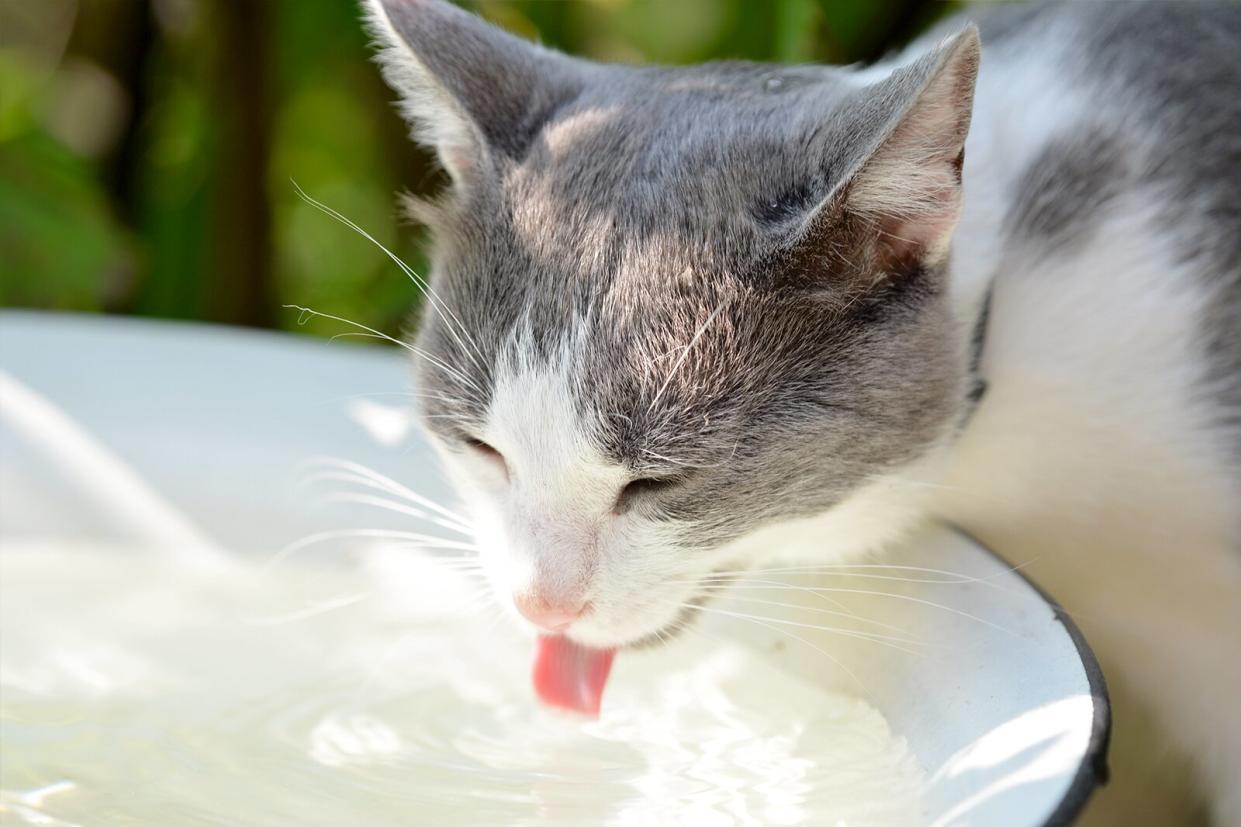5 Clever Ways to Encourage Your Cat to Drink More Water, According to a Veterinarian

Taalulla / Getty Images
Just as your body needs enough water to function properly, so too do your four-legged companions. While dogs typically stay well hydrated, most cats don't drink enough. "Our domestic cats evolved from Middle Eastern desert wildcats, so it's likely their thirst drive is naturally low," says Carly Fox, DVM, senior veterinarian at Schwarzman Animal Medical Center. She adds that cats are also very particular, and can sometimes be turned off to certain water sources, or even where the water is placed. Despite having low thirst requirements, it's important for your feline to stay hydrated.
"Cats are prone to kidney disease, constipation, and urinary tract disease," says Dr. Fox. "Keeping our feline friends hydrated can prevent the onset of these diseases." Since cats don't typically drink enough water on their own, Dr. Fox highlights a few clever ways to get your furry pal to stay hydrated.
Related: Six Secret Cues That Cats Use to Communicate with Each Other
Offer standing and running water.
If your cat isn't drinking from their designated dish, try diversifying the way in which you're providing them water. For example, perhaps one dish is filled with standing water and the other option is a fountain. "Offering cats running water can sometimes turn their water drinking habits around," Dr. Fox says. "Even if your cat is not immediately interested, keep the fountain around so your cat can acclimate." Pro tip: If they already have an affinity for your shower or running faucet, your furry friend will likely enjoy a fountain to drink from.
Place a bowl away from their food.
It's possible your feline may not be drinking its water because he isn't fond of its location in your home. "Some cats are turned off by water adjacent to food, since their instinct tells them that it may be contaminated," Dr. Fox says. "Keeping another option in a different location gives them a 'clean' choice."
Add food into their diet.
Have you ever wondered if you should be feeding your cat a mixture of dry and wet food? One reason feline owners do this is to increase their cat's water intake. "Wet food is made up of about 70 percent water as opposed to dry food, which is only 10 percent," Dr. Fox says. "This alone allows your pet to get a large part of their daily water needs through their food."
In addition to giving them a can of tuna or salmon here and there, you can also add more water to their food—whether it is wet or dry. Additionally, Dr. Fox says you can make your cat's water more palatable by adding a small amount of tuna water or chicken broth to it.
Keep their water dish clean.
You wouldn't want to drink out of a dirty cup of water, and neither does your cat. Like people, cats are very discerning creatures, Dr. Fox notes. Hair or soaked kibble in their dish can easily turn your feline off—so keep it pristine. "The water should be changed daily, and more often if noticeably soiled. The water bowl should be properly cleaned one to two times a week," she says.
Try a new bowl.
Some cats are particular when it comes to the type of water dish they drink out of. "I recommend a stainless or ceramic bowl. These are less prone to bacterial contamination," Dr. Fox says. "Plastic dishes have also been linked to feline acne—a non-contagious skin condition—so they should be avoided, if possible." Your four-legged friend may also not like their water dish if it's too small and shallow, as drinking from it may constantly stimulate their whiskers and cause sensory overload. "If your cat seems reluctant to certain shaped bowls, you can try whisker-friendly bowls, which tend to be wider and shallower."

